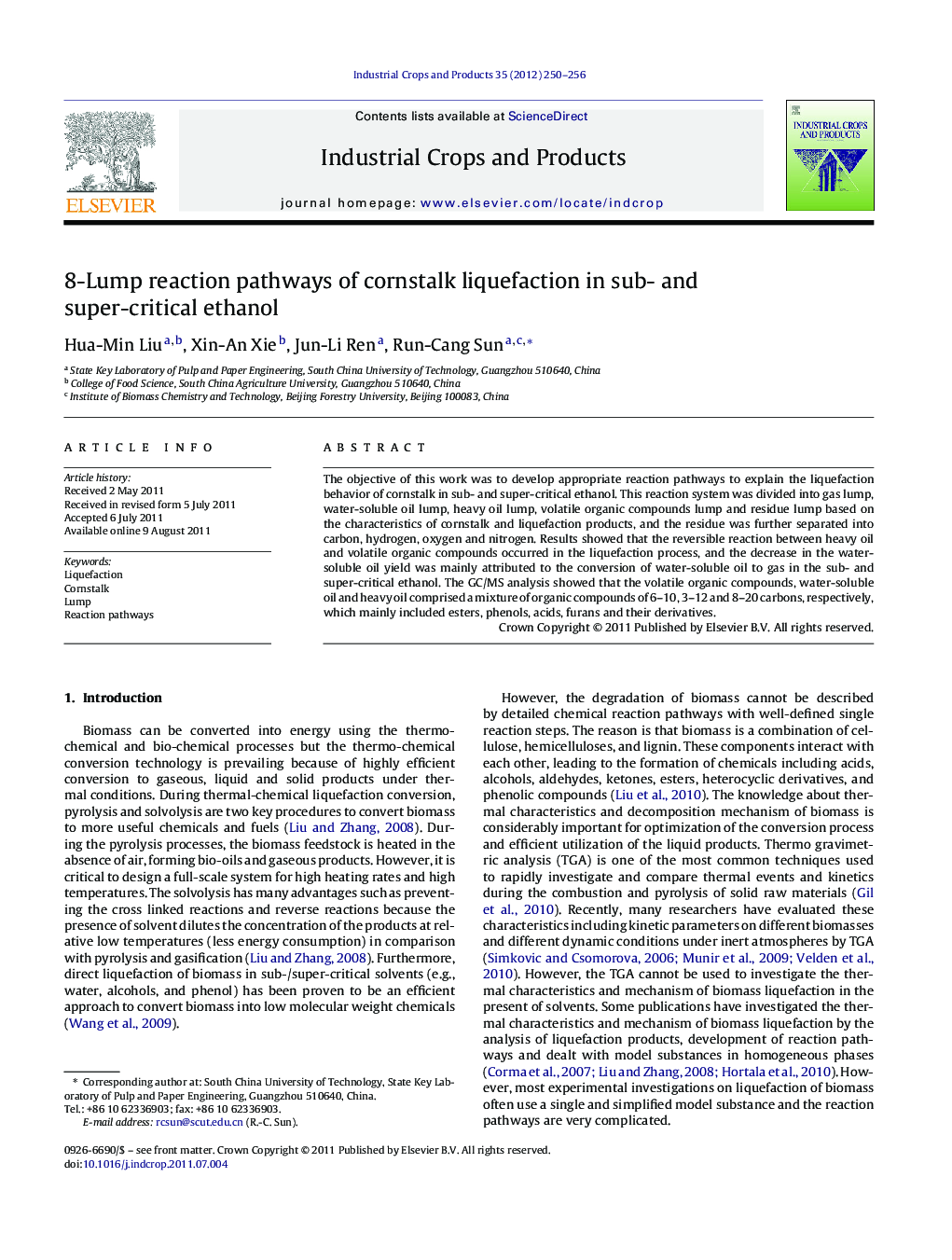| Article ID | Journal | Published Year | Pages | File Type |
|---|---|---|---|---|
| 4514635 | Industrial Crops and Products | 2012 | 7 Pages |
The objective of this work was to develop appropriate reaction pathways to explain the liquefaction behavior of cornstalk in sub- and super-critical ethanol. This reaction system was divided into gas lump, water-soluble oil lump, heavy oil lump, volatile organic compounds lump and residue lump based on the characteristics of cornstalk and liquefaction products, and the residue was further separated into carbon, hydrogen, oxygen and nitrogen. Results showed that the reversible reaction between heavy oil and volatile organic compounds occurred in the liquefaction process, and the decrease in the water-soluble oil yield was mainly attributed to the conversion of water-soluble oil to gas in the sub- and super-critical ethanol. The GC/MS analysis showed that the volatile organic compounds, water-soluble oil and heavy oil comprised a mixture of organic compounds of 6–10, 3–12 and 8–20 carbons, respectively, which mainly included esters, phenols, acids, furans and their derivatives.
Graphical abstractEffect of ethanol concentration on the lump yields.Figure optionsDownload full-size imageDownload as PowerPoint slideHighlights► The main products in cornstalk liquefaction were gas, volatile organic compounds, heavy oil and water-soluble oil. ► The reversible reaction between heavy oil and volatile organic compounds was observed. ► Water-soluble oil was mainly transformed into gas in the secondary reaction ► Bio-oil was converted to residue in the form of C and N at elevated temperatures.
